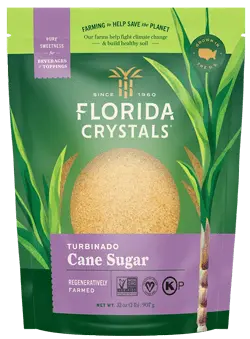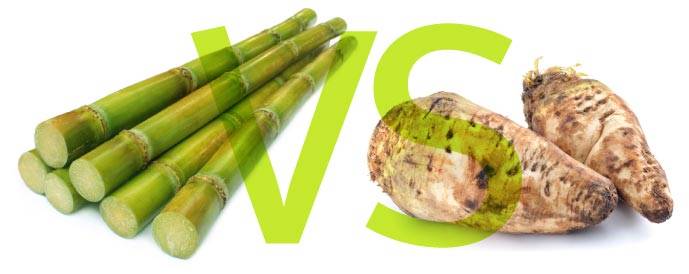Recognizing the Important Methods and Technologies Used in Modern Cane Sugar Handling
The development of walking cane sugar processing has actually been significantly formed by the integration of innovative methods and modern technologies that attend to both performance and sustainability. As we explore these essential innovations, it ends up being crucial to analyze just how they not just enhance manufacturing but likewise straighten with broader market patterns and customer needs, elevating questions regarding the future of sugar processing and its effects for international markets.
Historical Context of Cane Sugar Handling
The historic context of walking stick sugar processing exposes a rich tapestry of agricultural technology and social exchange that has formed its advancement over centuries. Coming From in Southeast Asia, sugarcane was grown as early as 8000 BCE - Cane Sugar Processing. The procedure of improving and extracting sugar gained energy in India, where techniques for condensation were developed around the sixth century. This knowledge traversed to the Middle East, and by the 12th century, sugar came to be a valued asset in Europe, leading to the establishment of sugar ranches in the Mediterranean.

Advanced Removal Strategies
Efficiency in walking cane sugar removal has seen considerable innovations, driven by the need for greater returns and lower production prices. Typical approaches have developed, offering way to ingenious technologies that improve the efficiency of the extraction process. One noteworthy advancement is the use of enzyme-assisted extraction, where specific enzymes break down cell wall surfaces and launch even more sucrose from the cane fibers. This strategy not only enhances sugar return however additionally decreases the energy required for handling.
In addition, the fostering of membrane layer purification technologies, such as nanofiltration and turn around osmosis, has revolutionized the separation of sugar from impurities. These methods enable for the discerning permeation of sugar molecules while preserving larger pollutants, improving the extraction procedure and minimizing waste.
Additionally, the combination of continuous extraction systems has resulted in enhanced operational efficiency. Cane Sugar Processing. These systems preserve a consistent circulation of walking cane product, guaranteeing ideal removal problems and lowering downtime associated with batch handling
Cutting-edge Refining Technologies
Refining strategies in walking stick sugar handling have actually undertaken a transformative change, driven by the need for higher pureness and enhanced product quality. Among one of the most noteworthy developments is the adoption of membrane filtering technologies, such as ultrafiltration and nanofiltration. These procedures successfully remove contaminations and colorants without the requirement for substantial chemical therapies, thereby maintaining the sugar's natural flavor and boosting its charm.
An additional significant improvement is using ion exchange materials, which read this enable careful elimination of undesirable ions from sugar options. This innovation not only raises the general pureness of the last product yet likewise contributes to reduced waste and ecological impact.
In addition, advancements in adsorption strategies, using activated carbon and various other sophisticated products, have confirmed efficient in decolorizing sugar solutions while keeping optimum quality. The integration of these cutting-edge refining technologies makes sure that manufacturers can create refined sugar with remarkable clearness and taste, fulfilling the developing choices of consumers.
Automation and Control Solution
Current click this link advancements in refining innovations have actually led the way for significant improvements in automation and control systems within cane sugar processing centers. These systems make use of innovative software and equipment to boost functional performance, lower human mistake, and make certain consistent product quality.
Modern automation integrates various elements, consisting of sensing units, actuators, and programmable logic controllers (PLCs), allowing real-time tracking and control of essential processes. As an example, stress, circulation, and temperature rates can be exactly controlled throughout extraction, clarification, and condensation phases, maximizing performance and reducing waste.
Furthermore, progressed information analytics and equipment learning algorithms play a crucial role in predictive maintenance, permitting drivers to anticipate equipment failures before they occur. This proactive strategy not just reduces downtime yet likewise expands the life expectancy of machinery.
Additionally, automation promotes the application of Sector 4.0 principles, encouraging sugar mills to accomplish greater connection and data exchange throughout processes. Consequently, decision-making becomes even more informed and dexterous, inevitably improving the total competition of cane sugar manufacturing. With these innovations, the market is well-positioned to meet expanding worldwide demands while preserving operational excellence.
Sustainability Practices in Sugar Production
Sustainability techniques in sugar manufacturing have become increasingly important as the market looks for to balance financial viability with environmental duty. As consumer recognition expands concerning the ecological impacts of farming techniques, sugar producers are embracing innovative techniques to lower their ecological impact.
One substantial approach is the application of accuracy farming techniques, which make use of information analytics to enhance resource use, such as water and plant foods. This minimizes waste and decreases the impact on regional communities. Moreover, lots of manufacturers are transitioning to renewable resource sources, such as biomass from sugarcane by-products, to power their procedures, thereby decreasing reliance on nonrenewable fuel sources.
Water management methods are additionally essential; rainwater harvesting and effective irrigation systems aid minimize water scarcity problems. Cane Sugar Processing. In addition, integrated bug monitoring techniques lower chemical use, promoting biodiversity and dirt health
Business social duty campaigns are arising, with have a peek here business purchasing neighborhood areas and guaranteeing reasonable labor techniques. By embracing these sustainability practices, the sugar market not only improves its online reputation but likewise adds to an extra lasting agricultural landscape, paving the method for future generations.

Conclusion
In recap, modern-day walking cane sugar processing incorporates a series of sophisticated methods and modern technologies that significantly enhance effectiveness, sustainability, and yield. The adoption of ingenious extraction and refining methods, together with automation and control systems, facilitates improved operational efficiency and item quality. In addition, the focus on sustainable techniques highlights a dedication to minimizing environmental influence and promoting honest manufacturing. Collectively, these improvements position the walking stick sugar sector to fulfill contemporary needs while addressing important global challenges.
The advancement of walking stick sugar handling has been considerably formed by the integration of innovative techniques and modern technologies that deal with both performance and sustainability.The historical context of walking stick sugar processing discloses a rich tapestry of farming innovation and social exchange that has actually shaped its growth over centuries. Advancements in milling and refining arised, laying the groundwork for modern-day cane sugar processing.Refining strategies in walking stick sugar handling have gone through a transformative change, driven by the demand for higher pureness and enhanced item quality.In recap, contemporary cane sugar handling integrates an array of advanced strategies and modern technologies that dramatically improve return, sustainability, and effectiveness.